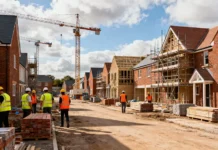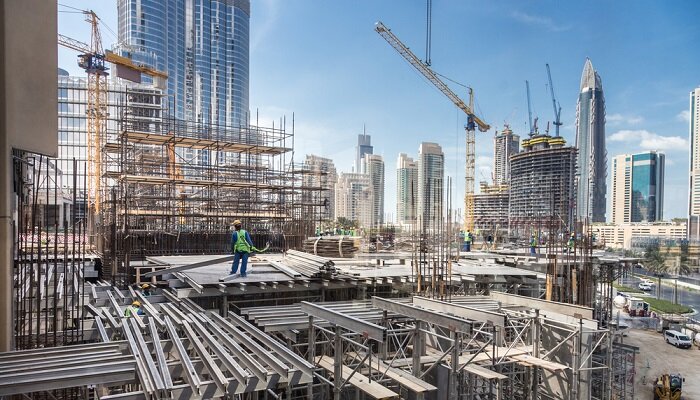According to JLL’s latest Construction Market Intelligence report, the construction sector in the Middle East and North Africa, which is also referred to as the MENA region, demonstrated robust performance in the first half of 2023, despite facing global economic challenges.
According to the report, which gathered perspectives from industry sources and specialists, the region granted a total of $101 billion in projects during the first half of the year. Notably, Saudi Arabia and the UAE were responsible for 67% of this value, with Saudi Arabia accounting for $44 billion and the UAE accounting for $23 billion. Both markets experienced growth when compared to the corresponding period in 2022.
Egypt, known for its strong pipeline of upcoming projects, experienced a decrease in the value of handed projects during the first half of 2023 when compared to the same period in the previous year. According to GlobalData, the construction market in Egypt is expected to experience a 9% average annual growth rate- AAGR from 2024 to 2027. This growth will be driven by transportation, residential sectors, and renewable energy. In 2022, the residential sector in Egypt demonstrated remarkable strength, and it still holds second place in terms of construction project awards as of H1 2023.
The residential sector in the UAE had a strong performance, with awarded projects worth over $9 billion. Dubai alone accounted for almost 75% of the total value. The hospitality and mixed-use segments have also emerged as prominent sectors in Saudi Arabia, with leisure projects contributing $2 billion.
The construction market in Saudi Arabia is projected to experience a 4% AAGR from 2024 to 2027. This growth can be attributed to the currently underway economic diversification efforts that are part of the Saudi Vision 2030. Projects like ROSHN’s SEDRA, Jeddah Central, as well as Diriyah Gate Development Authority’s Diriyah, along with initiatives by the Public Investment Fund like Oxagon, THE LINE, and other residential and tourism projects, are making rapid progress. The building and construction sector is a significant contributor to the country’s GDP, accounting for 6% of the total. This makes it the second-largest non-oil sector in the entire nation.
The project pipeline in the MENA region has an estimated value exceeding $3 trillion. Egypt, Saudi Arabia, along with the UAE collectively account for over 60% of this value. The Kingdom took the lead with a share of roughly 35%, which is expected to be worth $1.3 trillion. Egypt and the UAE, on the other hand, are both predicted to have a value of $500 billion each.
According to Market Intelligence Lead MEA at JLL, Laura Morgan, the region has displayed an unusual pattern of sustained growth, despite the global challenges of rising interest rates, high inflation, and a slow trade recovery that have affected the construction industry worldwide. The construction sector, led primarily by nations such as the UAE, Saudi Arabia, and Egypt, has an impressive project pipeline exceeding $3 trillion. This sector offers more than just stability in the upcoming period.
The construction market in the UAE is projected to experience a growth rate of over 3% AAGR from 2024 to 2027. This growth can be attributed to rising investments in infrastructure and real estate sectors, including residential, hospitality, mixed-use, as well as commercial properties. According to research conducted by Emirates NBD, Dubai’s construction index reached its highest level in four years, reaching 55.1 in June 2023.
Commodity prices have experienced a surge in the fourth quarter of 2022 and the first quarter of 2023 due to various factors, including regional and global demand and increasing input costs. However, there were some signs of stability observed in the first half of 2023. During this period, there were declines in the prices of aluminium, iron ore, copper, and Brent crude oil. The prices of construction in the MENA region are influenced by various economic factors, domestically as well as internationally. As a result, it is difficult to predict whether these prices will decrease or remain stable.
In addition, the projected average oil price for 2023 is $85 per barrel, representing a $15 decrease compared to the price in 2022. This decline has the potential to result in reduced fuel and production expenses, presenting a chance for cost savings in both production and transportation.
It is estimated that there will be an average annual percentage change of 3% in tender price inflation in the UAE. The increase can be attributed to market factors, specifically shifts in commodity and construction material prices. However, it is expected that the Kingdom will experience an average annual increase of about 6% in 2023.
Based on the stability of commodity prices in the second half of 2023, the expected worth of the project pipeline in line with future demand, and intelligence obtained from market sources, it is estimated that tender price inflation in the UAE will be around 2% in 2024.




























